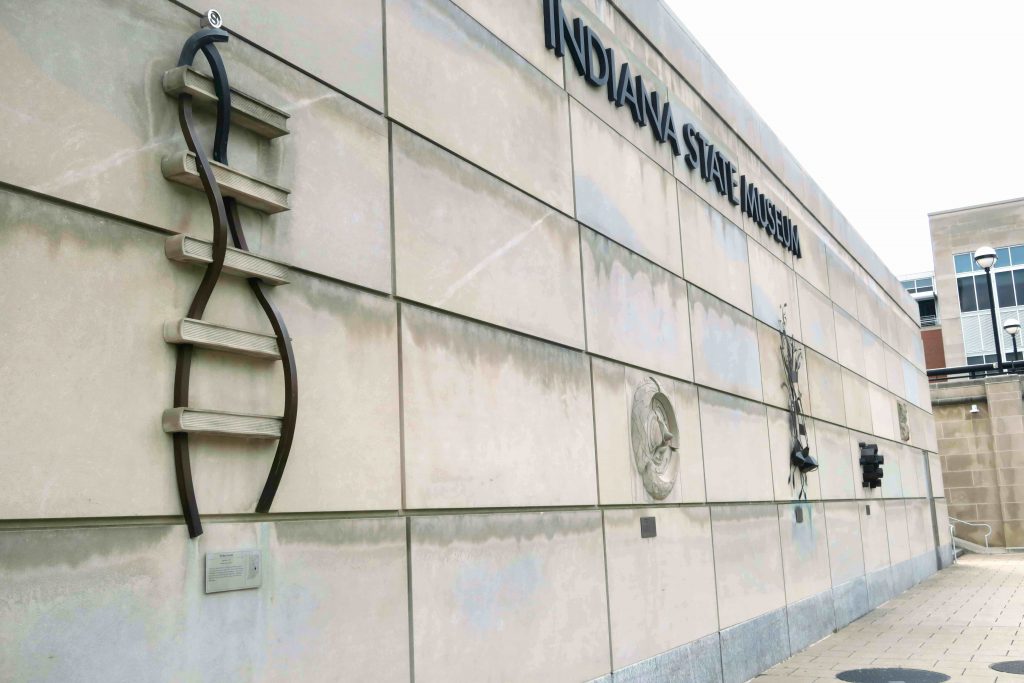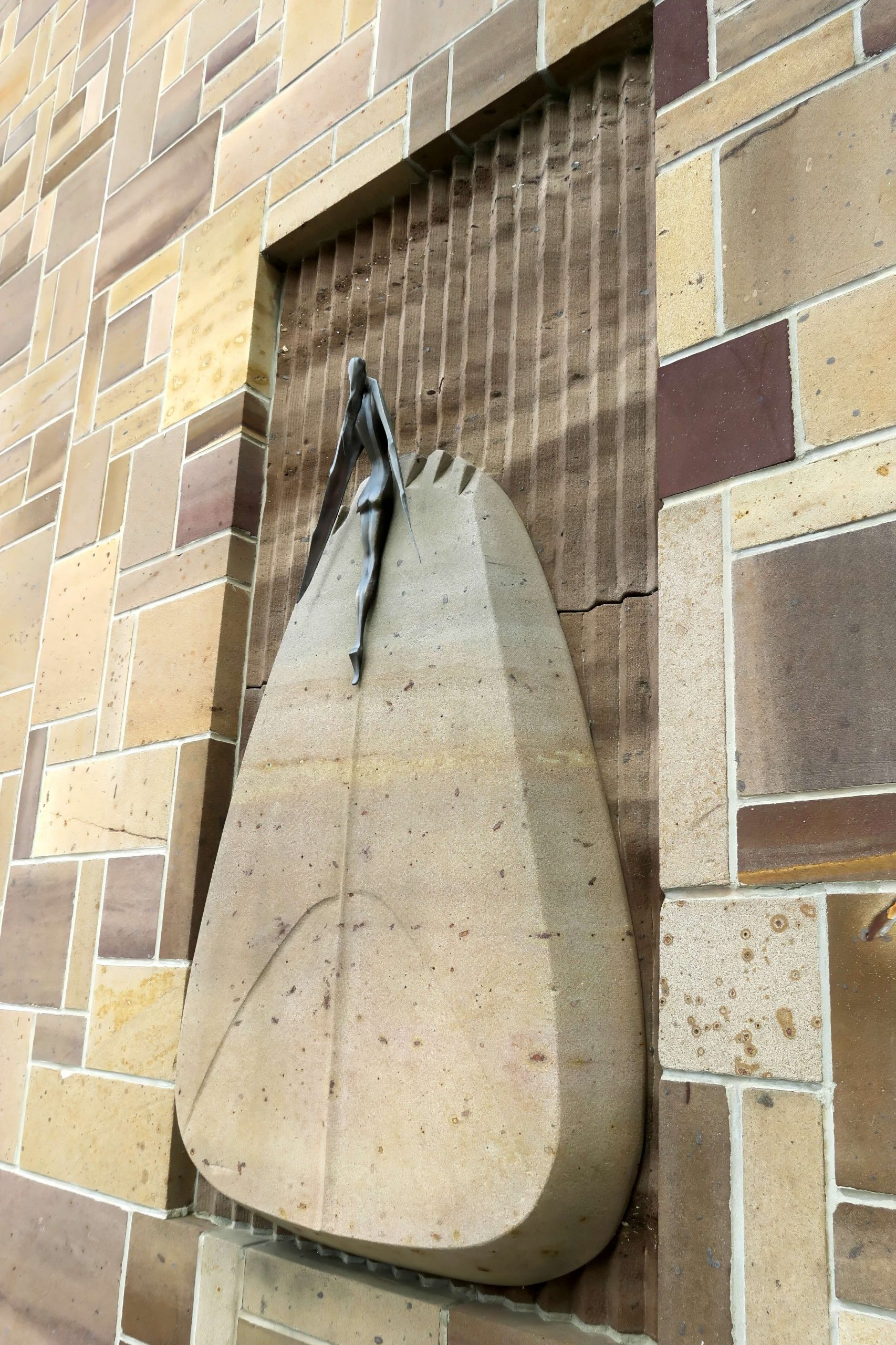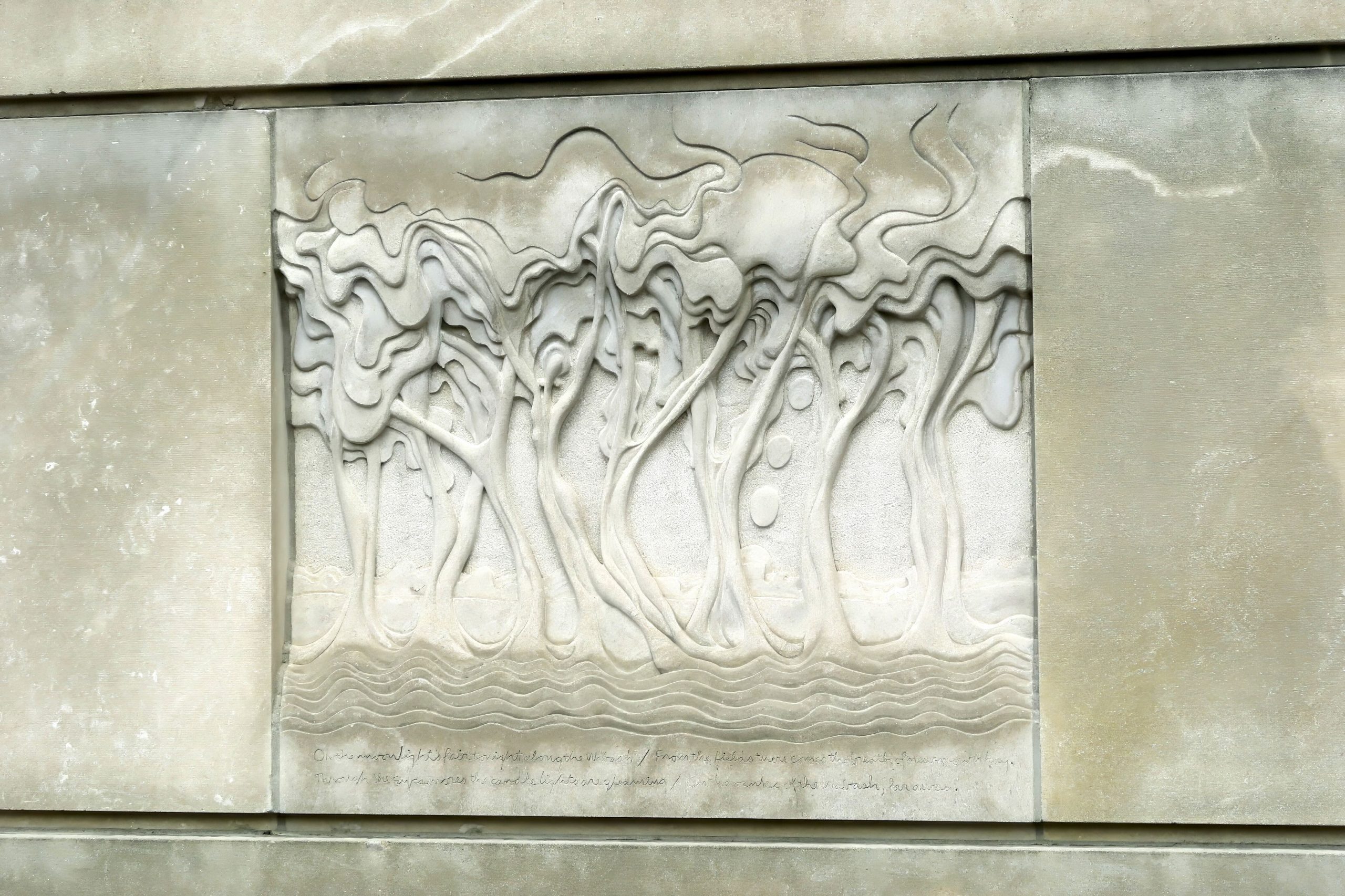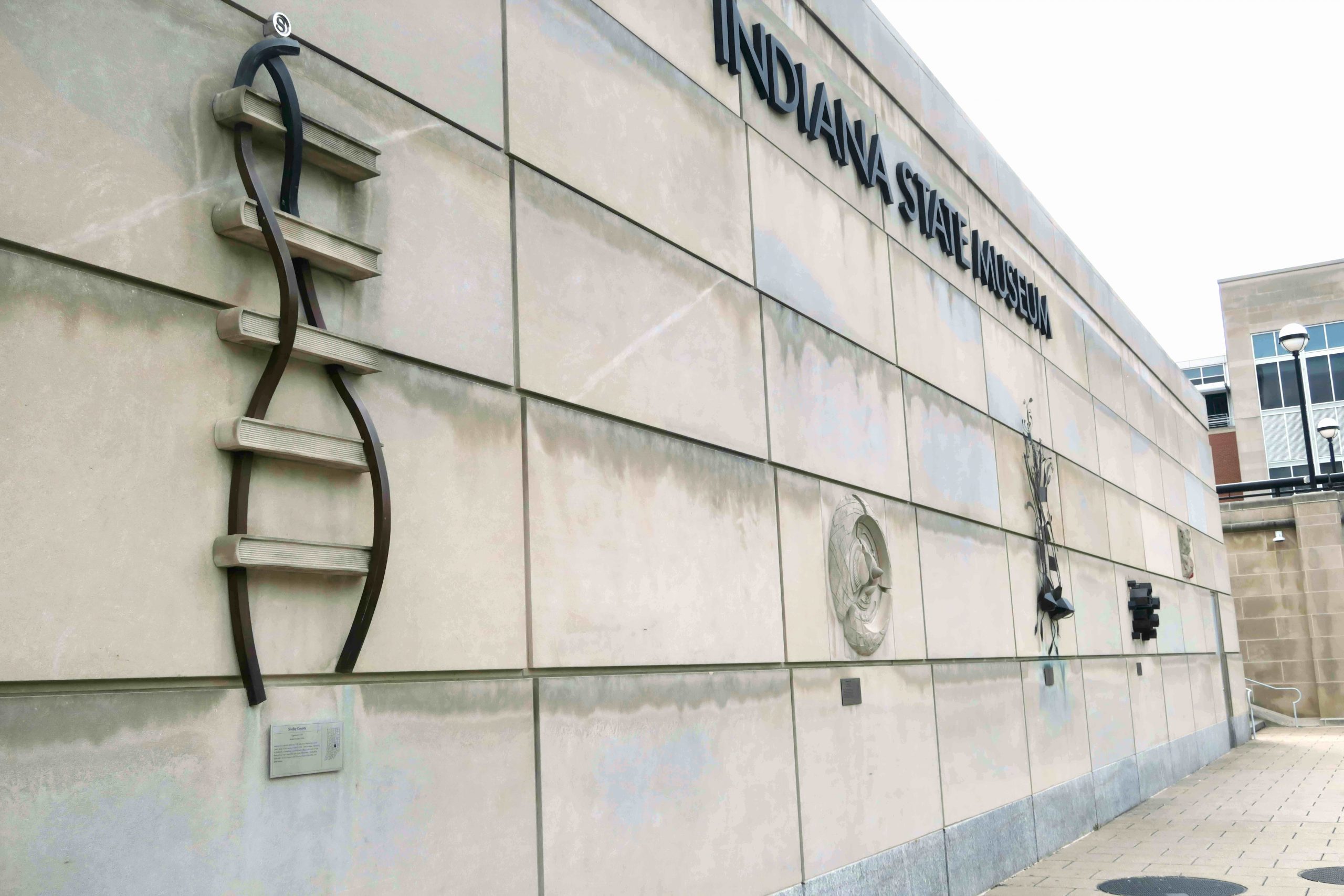The campus, constructed from 1999 to 2002, is also home to 92 County Walk. This permanent experience features 92 sculptures, one for each of Indiana’s counties. Most of the sculptures are built directly into the limestone walls of the museum; others are free-standing pieces on the museum grounds.

Many of the sculptures are carved limestone, often combined with other elements such as metal, glass, or acrylic. Each piece is unique, with motifs and symbols referencing something notable about the county it represents. Sometimes the symbology is straightforward. The DuBois County icon, for example, is a dresser carved from limestone, with one drawer slightly open. This pays tribute to the local woodworking industry. The drawer pulls are egg-shaped, in a nod to the large number of poultry farms in the county. Other icons are more cryptic; Jackson County’s icon depicts a forested scene with five figures peering out from behind trees, with railroad tracks running along the bottom. This is an homage to the nation’s first train robbery, which occurred near Seymour in Jackson County on October 6, 1866.
The story of how these enigmatic sculptures came to be dates to the late 1990s, when plans for the current Indiana State Museum building were underway. Susan Williams, then-executive director of the Indiana State Office Building Commission, and William Browne Jr., of Ratio Architects, Inc., worked together to create a space that would tell Indiana’s story even before visitors stepped inside the building. They contacted 2nd Globe, a sister company founded by Young & Laramore principals David Young and Jeff Laramore, to spearhead the proposed 92 County Walk. Young and Laramore personally designed each sculpture after consulting with museum curators and local county historians to identify the notable people, events, natural characteristics, or industries that should be highlighted. 2nd Globe production manager John Brooks worked with several artists and craftsmen around the state to produce each work of art. The array of materials used required the expertise of welders, glassmakers, machinists, stone masons, and more.



Credit: Jessica Erin Fischer
Some of the icons have been changed since their original installation. The LaGrange County icon, for instance, originally featured small colorful curiosities cast in resin, representing the flea markets of Shipshewana. Because the resin did not age well, in 2007 replacement objects were cast in bronze and chemically patinated to achieve a similarly colorful look. The Randolph County piece, a panel of enameled glass, was re-done after weathering caused losses on the surface; when the icon was re-installed, its fragile side was flipped to face indoors, slowing future degradation. Other icons have been repaired, cleaned, repainted, and replacement parts have been installed to maintain their original appearance.
With its placement on the museum’s exterior walls and grounds, 92 County Walk is open to visitors every day of the year. The Indiana State Museum is situated within the , adjacent to both the and .
FURTHER READING
- Indiana State Museum, David Jemerson Young, Jeff Laramore, and 2nd Globe. 2003. The Art of the 92 County Walk. Indianapolis, IN: Indiana State Museum Foundation. https://search.worldcat.org/en/title/55037994.
CITE THIS ENTRY
APA:
Smith, M. (2024). 92 County Walk. Encyclopedia of Indianapolis. Retrieved Jan 4, 2026, from https://indyencyclopedia.org/92-county-walk/.
MLA:
Smith, Meghan. “92 County Walk.” Encyclopedia of Indianapolis, 2024, https://indyencyclopedia.org/92-county-walk/. Accessed 4 Jan 2026.
Chicago:
Smith, Meghan. “92 County Walk.” Encyclopedia of Indianapolis, 2024. Accessed Jan 4, 2026. https://indyencyclopedia.org/92-county-walk/.

Help improve this entry
Contribute information, offer corrections, suggest images.
You can also recommend new entries related to this topic.
